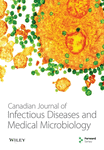Social Network Investigation of a Syphilis Outbreak in Ottawa, Ontario
Abstract
BACKGROUND: The incidence of syphilis in Ottawa, Ontario, has risen substantially since 2000 to six cases per 100,000 in 2003, again to nine cases per 100,000 in 2007, and recently rose to 11 cases per 100,000 in 2010. The number of cases reported in the first quarter of 2010 was more than double that in the first quarter of 2009.
OBJECTIVE: In May 2010, the Ontario Ministry of Health and Long Term Care requested the assistance of the Field Epidemiology Program to describe the increase in infectious syphilis rates and to identify social network sources and prevention messages.
METHODS: Syphilis surveillance data were routinely collected from January 1, 2009 to July 15, 2010, and social networks were constructed from an enhanced social network questionnaire. Univariate comparisons between the enhanced surveillance group and the remaining cases from 2009 on non-normally distributed data were conducted using Kruskal-Wallis tests and χ2 tests.
RESULTS: The outbreak cases were comprised of 89% men. Seventeen of the 19 most recent cases consented to answer the questionnaire, which revealed infrequent use of condoms, multiple sex partners and sex with a same-sex partner. Information regarding social venues where sex partners were met was plotted together with sexual partnerships, linking 18 cases and 40 contacts, representing 37% of the outbreak population and connecting many of the single individuals and dyads.
CONCLUSION: Uncovering the places sex partners met was an effective proxy measure of high-risk activities shared with infected individuals and demonstrates the potential for focusing on interventions at one named bar and one Internet site to reach a high proportion of the population at risk.




